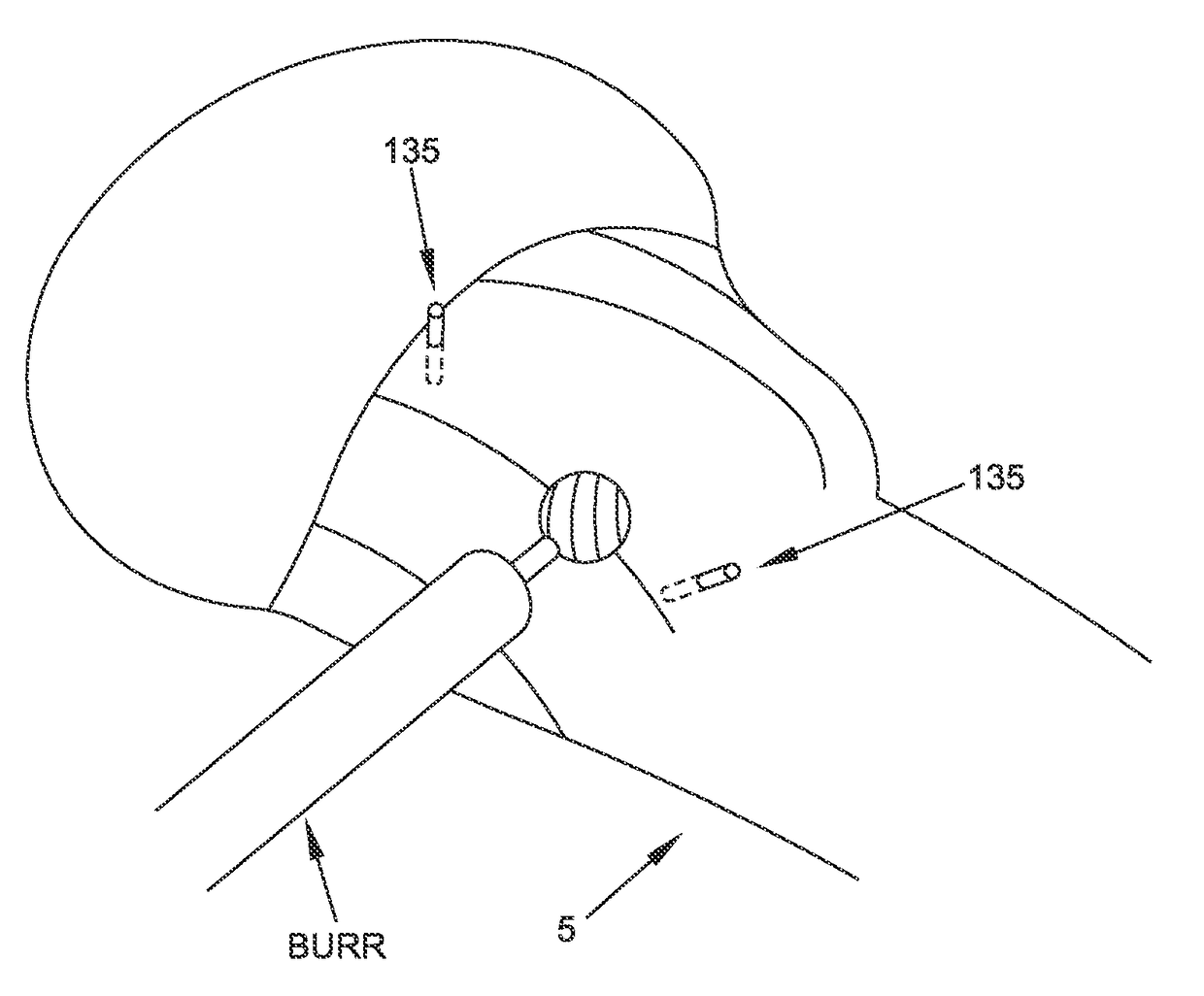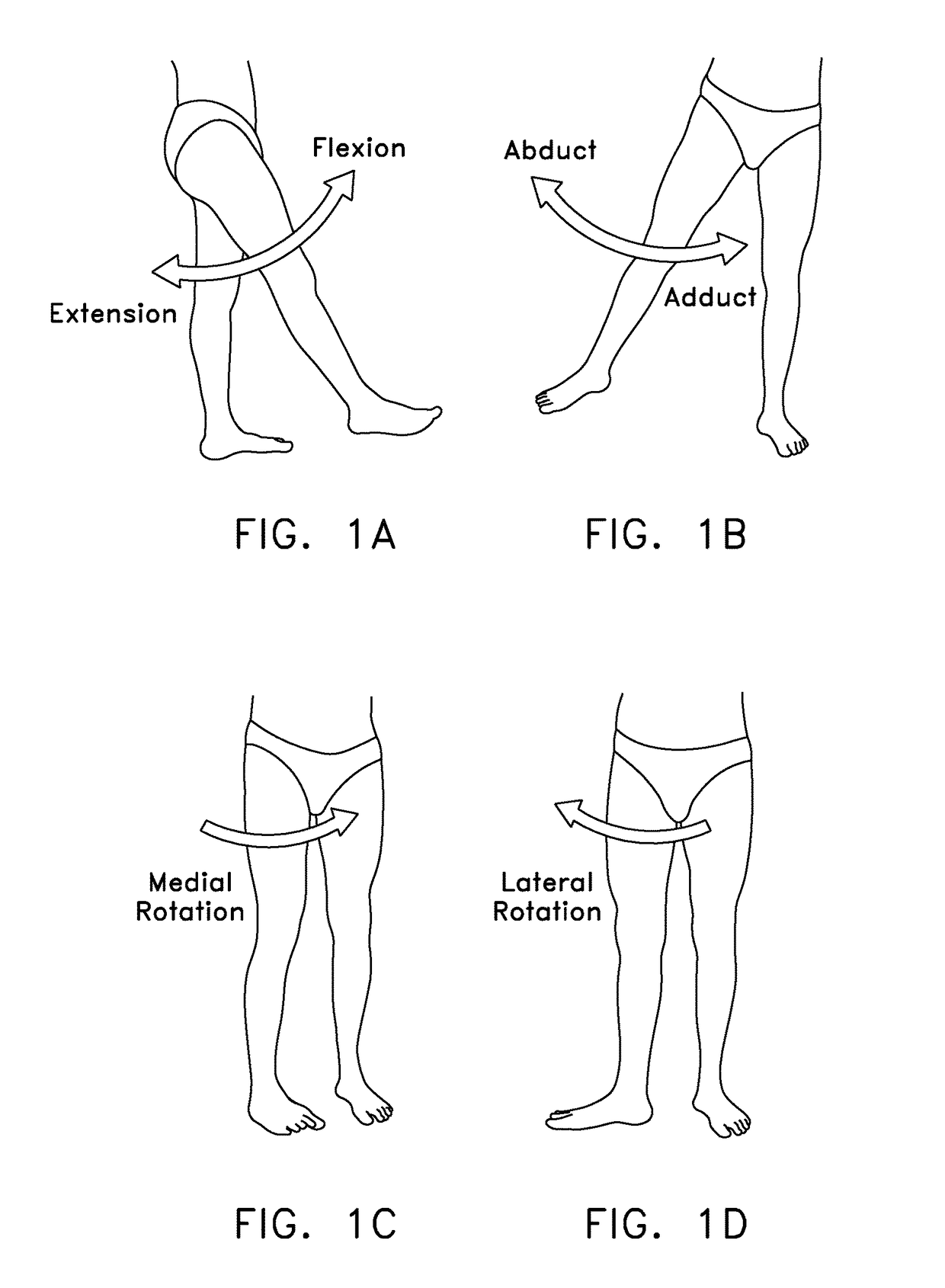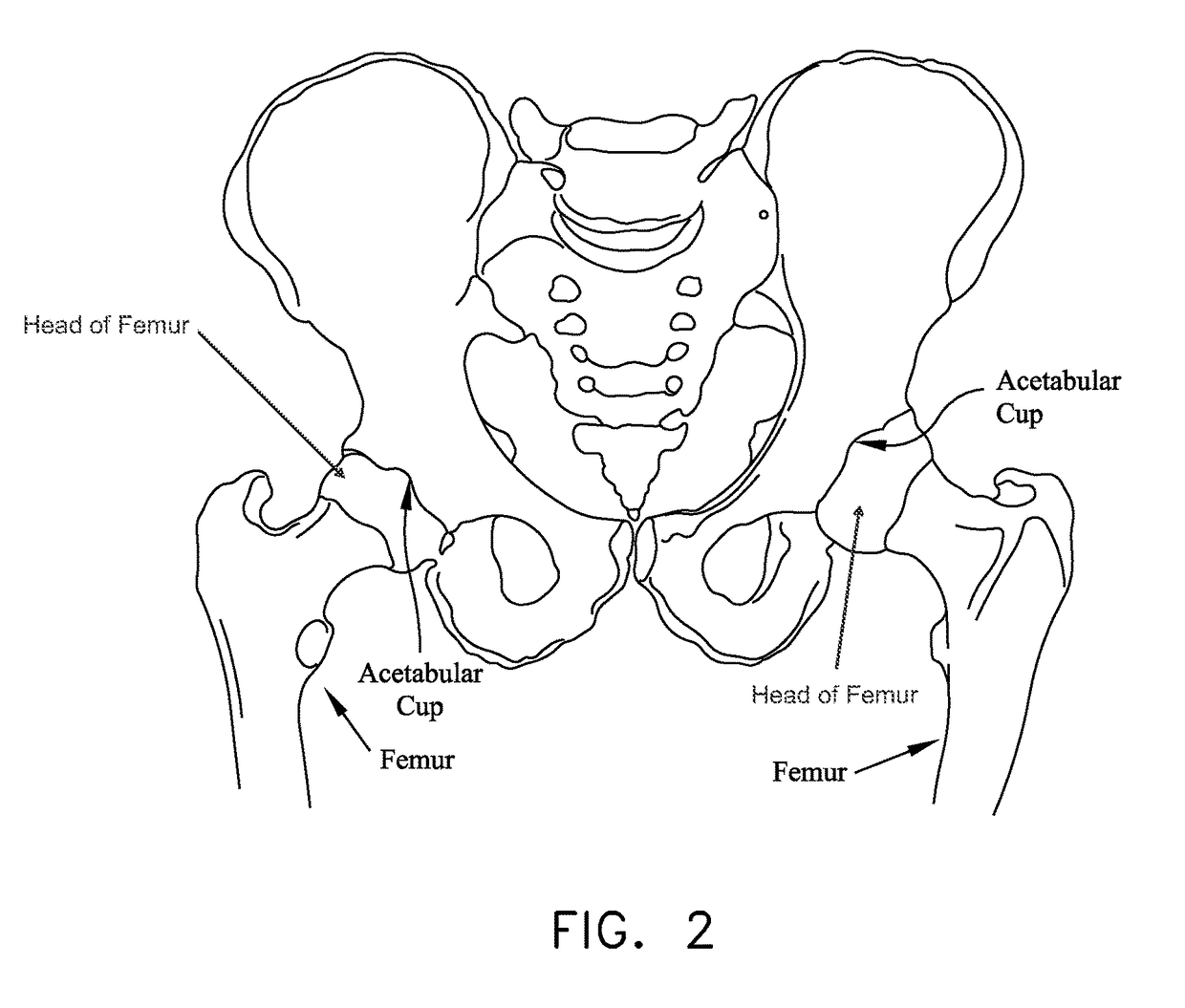Method and apparatus for reconstructing a hip joint, including the provision and use of a novel arthroscopic debridement template for assisting in the treatment of cam-type femoroacetabular impingement
a hip joint and femoroacetabular technology, applied in the field of surgical methods and equipment, can solve the problems of significant interference with patient comfort and lifestyle, pathology so severe that it is necessary to replace the hip joint in part or total, and the scope of procedures is generally limited
- Summary
- Abstract
- Description
- Claims
- Application Information
AI Technical Summary
Problems solved by technology
Method used
Image
Examples
Embodiment Construction
[0089]The present invention comprises the provision and use of a novel arthroscopic debridement template which can be used during an arthroscopic debridement procedure to treat cam-type femoroacetabular impingement.
[0090]As will hereinafter be discussed, the present invention provides mechanical arthroscopic debridement templates, optical arthroscopic debridement templates and arthroscopic debridement templates incorporating a bone cutting tool.
Mechanical Arthroscopic Debridement Templates
[0091]In one preferred form of the invention, there is provided a mechanical arthroscopic debridement template. In this form of the invention, the arthroscopic debridement template is mounted on the distal end of an insertable tool and the arthroscopic debridement template is capable of being reconfigurable between (i) a reduced configuration so that the arthroscopic debridement template may be moved to, and withdrawn from, an arthroscopic surgical site, and (ii) an expanded configuration so that t...
PUM
 Login to view more
Login to view more Abstract
Description
Claims
Application Information
 Login to view more
Login to view more - R&D Engineer
- R&D Manager
- IP Professional
- Industry Leading Data Capabilities
- Powerful AI technology
- Patent DNA Extraction
Browse by: Latest US Patents, China's latest patents, Technical Efficacy Thesaurus, Application Domain, Technology Topic.
© 2024 PatSnap. All rights reserved.Legal|Privacy policy|Modern Slavery Act Transparency Statement|Sitemap



